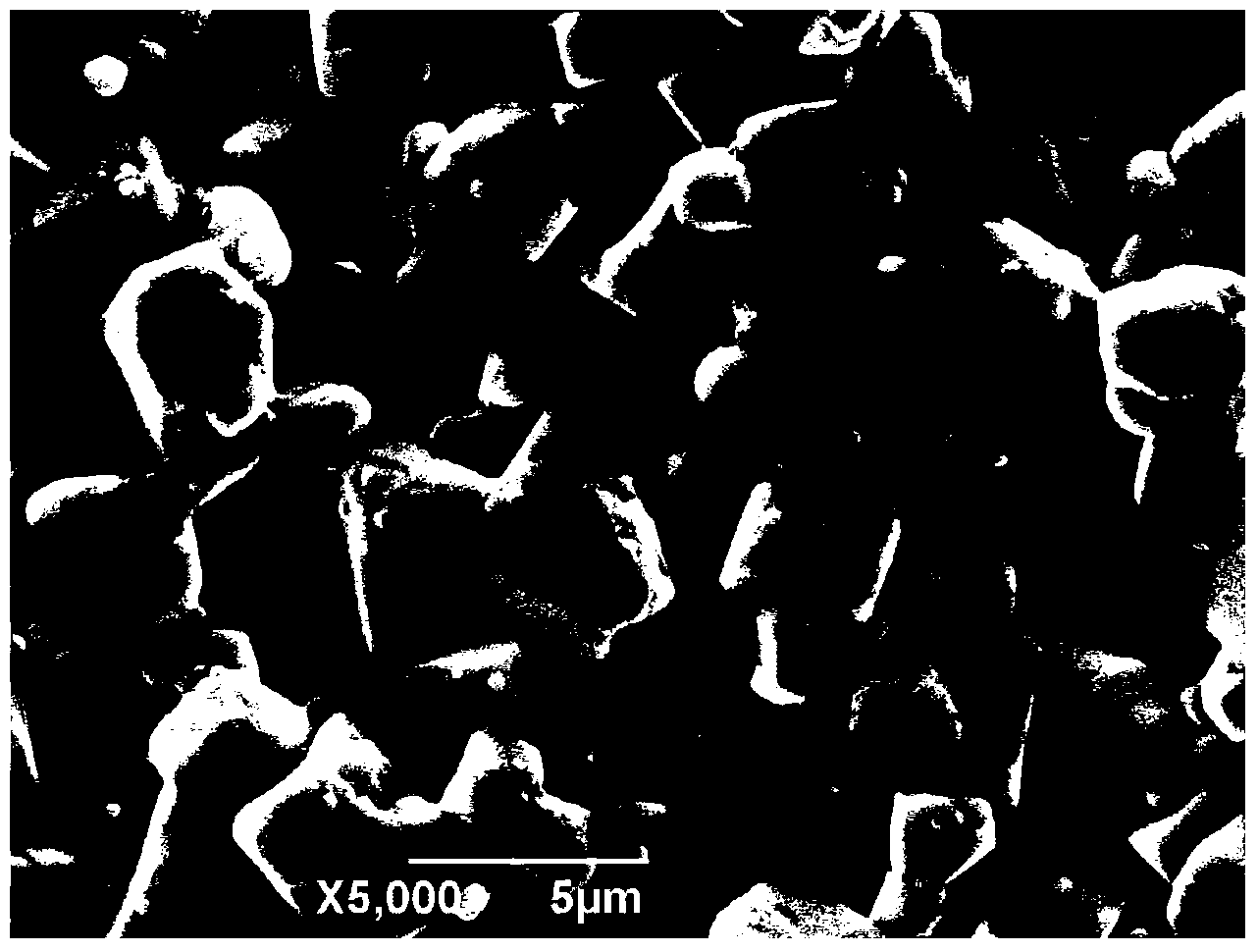Method for preparing binderless BaTiO3 ceramic through microwave-assisted method
A binder-free, microwave-assisted technology, applied in the field of preparation of binder-free ceramics, can solve the problems of ceramic grain growth, easy formation of pores, complex operation, etc., achieve short reaction cycle, no temperature gradient, and easy operation simple effect
- Summary
- Abstract
- Description
- Claims
- Application Information
AI Technical Summary
Problems solved by technology
Method used
Image
Examples
Embodiment 1
[0021] 1) BaCl 2 ·H 2 O and TiCl 4 Dissolve completely in deionized water at 0.3mol / L and 0.6mol / L, press [NaOH] / [TiCl 4 ]=10 Add mineralizer NaOH, stir evenly, obtain co-precipitation precursor A;
[0022] 2) Pour the co-precipitation precursor A into the lining of the microwave hydrothermal reaction kettle, then put the lining into the hydrothermal kettle, set the reaction temperature to 180°C, and the reaction time to 30 minutes;
[0023] 3) After the furnace temperature was naturally cooled to room temperature, the reactant was taken out, washed several times with deionized water, and then dried at 80°C. The final nano-BaTiO 3 Powder;
[0024] 4) For the obtained BaTiO 3 The powder is first manually compacted, and the obtained BaTiO 3 The block is sieved and granulated through a 200-300-mesh sieve to obtain a powder with a particle size of 75-48 μm, and the obtained powder is molded at 100 MPa (Φ12mm×1.2mm);
[0025] 5) Sinter the formed green body in a microwave si...
Embodiment 2
[0027] 1) BaCl 2 ·H 2 O and TiCl 4 Dissolve completely in deionized water at 0.3mol / L and 0.5mol / L, press [NaOH] / [TiCl 4 ]=9 Add mineralizer NaOH, stir evenly, obtain co-precipitation precursor A;
[0028] 2) Pour the co-precipitation precursor A into the lining of the microwave hydrothermal reaction kettle, then put the lining into the hydrothermal kettle, set the reaction temperature to 200°C, and the reaction time to 30 minutes;
[0029] 3) After the furnace temperature was naturally cooled to room temperature, the reactants were taken out, washed several times with deionized water, and then dried at 70°C. The final nano-BaTiO 3 Powder;
[0030] 4) For the obtained BaTiO 3 The powder is first manually compacted, and the obtained BaTiO 3 The block is sieved and granulated through a 230-270 mesh sieve to obtain a powder with a particle size of 63-53 μm, and the obtained powder is molded at 90 MPa (Φ12mm×1.2mm);
[0031] 5) Sinter the formed green body in a microwave si...
Embodiment 3
[0033] 1) BaCl 2 ? h 2 O and TiCl 4 Dissolve completely in deionized water at 0.3mol / L and 0.6mol / L, press [NaOH] / [TiCl 4 ]=11 Add mineralizer NaOH, stir evenly, obtain co-precipitation precursor A;
[0034] 2) Pour the co-precipitation precursor A into the lining of the microwave hydrothermal reaction kettle, then put the lining into the hydrothermal kettle, set the reaction temperature to 200°C, and the reaction time to 40min;
[0035] 3) After the furnace temperature was naturally cooled to room temperature, the reactants were taken out, washed several times with deionized water, and then dried at 75°C. The final nano-BaTiO 3 Powder;
[0036] 4) For the obtained BaTiO 3 The powder is first manually compacted, and the obtained BaTiO 3 The block is sieved and granulated through a 200-230 mesh sieve to obtain a powder with a particle size of 75-63 μm, and the obtained powder is molded at 95 MPa (Φ12mm×1.2mm);
[0037] 5) Sinter the formed green body in a microwave sint...
PUM
| Property | Measurement | Unit |
|---|---|---|
| particle size | aaaaa | aaaaa |
| particle size | aaaaa | aaaaa |
| particle size | aaaaa | aaaaa |
Abstract
Description
Claims
Application Information
 Login to View More
Login to View More - R&D
- Intellectual Property
- Life Sciences
- Materials
- Tech Scout
- Unparalleled Data Quality
- Higher Quality Content
- 60% Fewer Hallucinations
Browse by: Latest US Patents, China's latest patents, Technical Efficacy Thesaurus, Application Domain, Technology Topic, Popular Technical Reports.
© 2025 PatSnap. All rights reserved.Legal|Privacy policy|Modern Slavery Act Transparency Statement|Sitemap|About US| Contact US: help@patsnap.com


